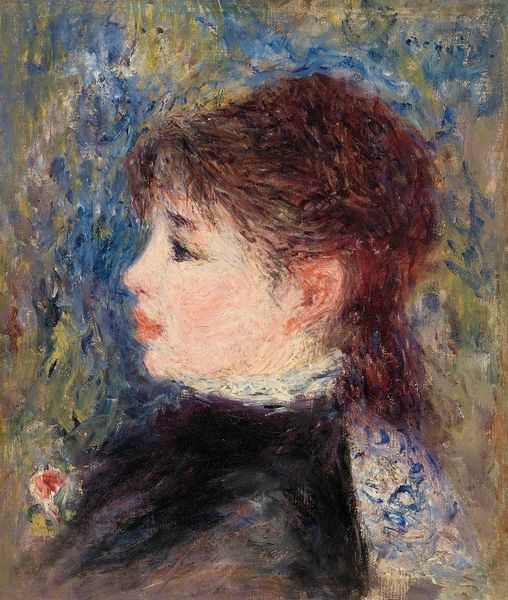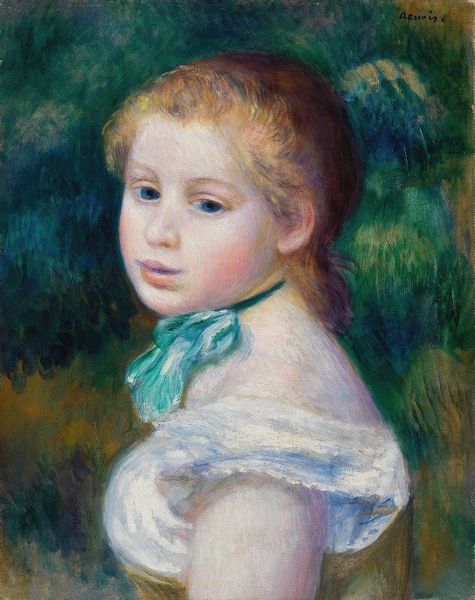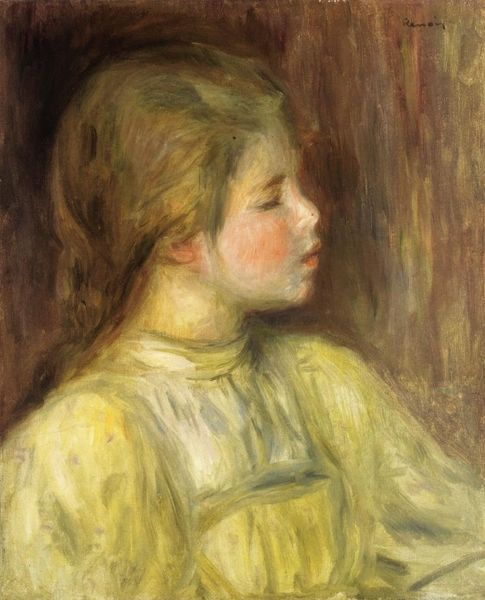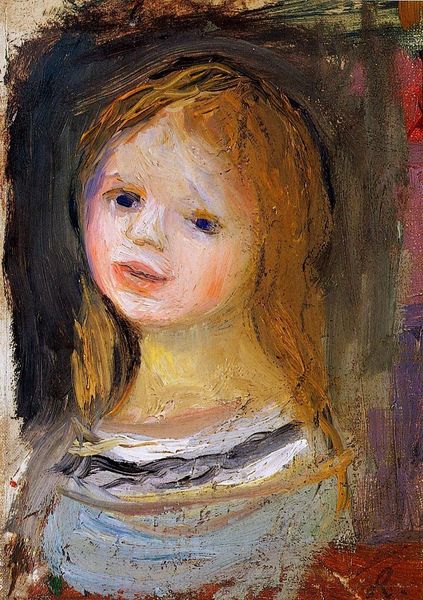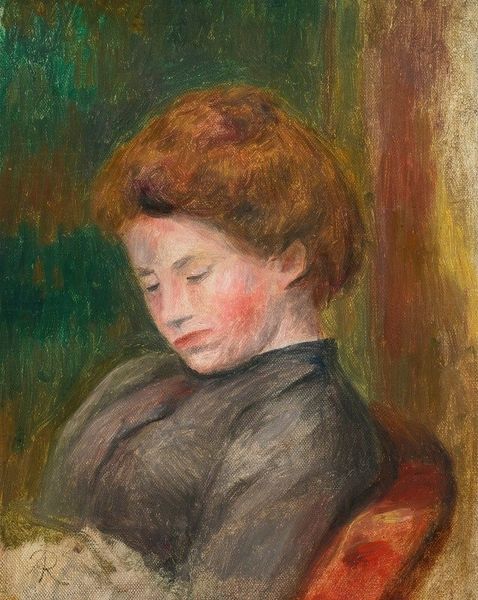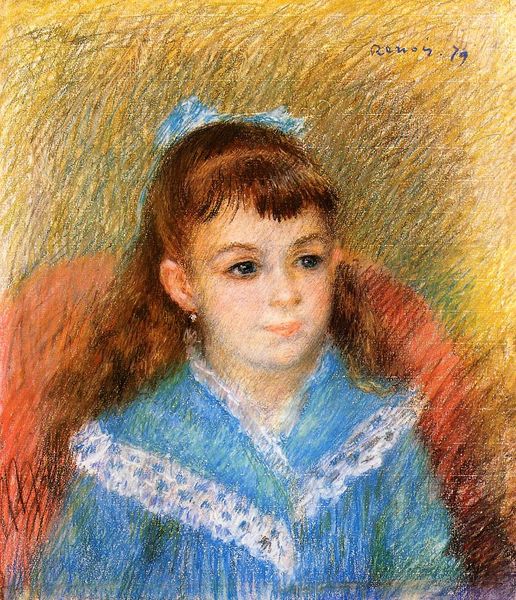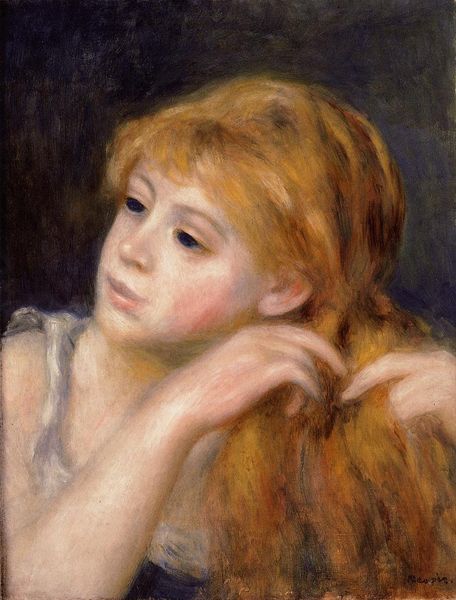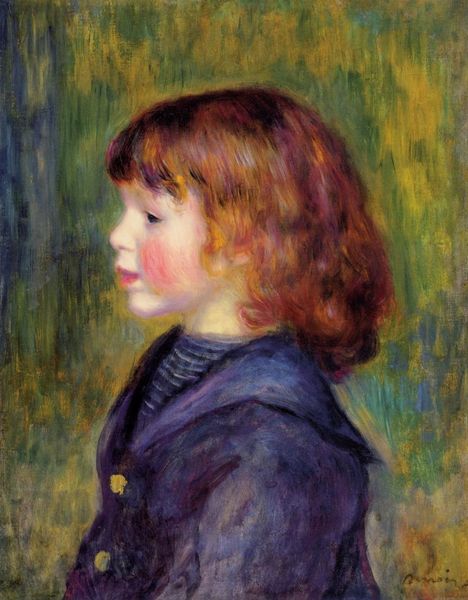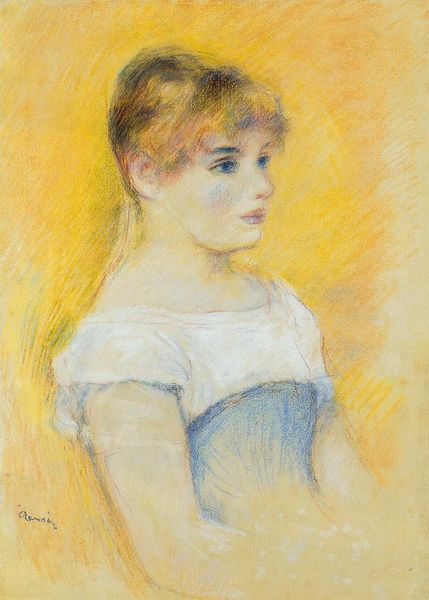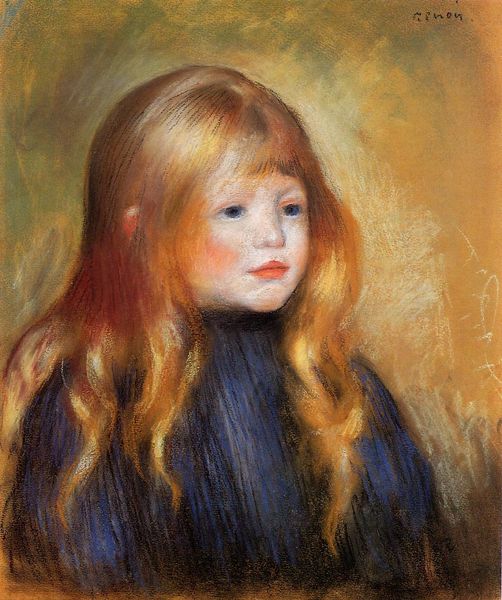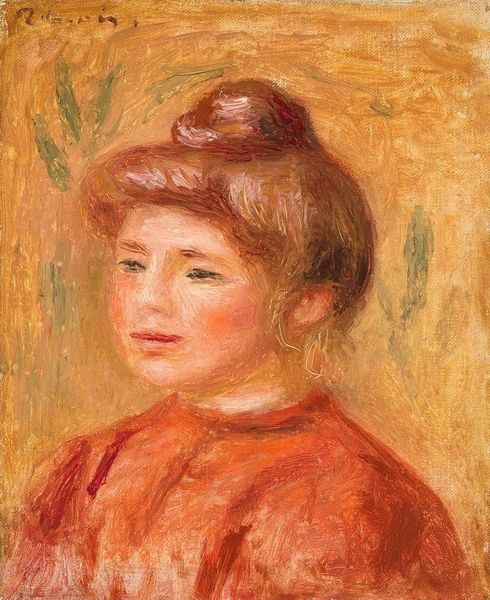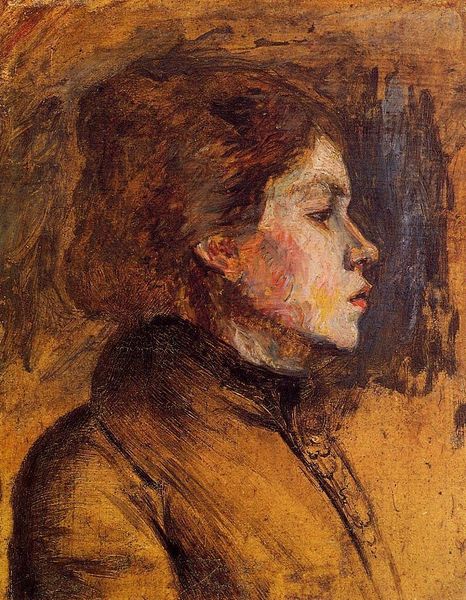
Copyright: Public domain
Curator: Looking at Renoir’s "Catulle Mendez" from 1888, I’m immediately drawn to the sheer expressiveness of the brushwork. It's almost dizzying in its effect, isn’t it? Editor: Dizzying in a way that pulls my eye directly to the face—a study in melancholy. The backdrop’s warm hues contrast beautifully with her cool complexion, but what interests me are the social and economic conditions that permitted Renoir to focus solely on portraits like this. The sitter seems to represent the leisure of that time, a symbol of bourgeoisie that contrasts sharply with other Renoir artworks depicting ordinary people doing their usual jobs, and raising their families. Curator: While social context is certainly important, let’s not overlook the artist’s deliberate use of light and color here. Notice how the light subtly catches the curves of her face, making the most of this style and bringing out that sense of fleeting impression, so true to the Impressionist ideal. How do you interpret the contrast with the darker, more solid shapes and colors in the painting? Editor: Exactly, but that darker area in fact reminds me that Renoir, like other impressionists, relied on readily available paints and materials to depict that fleeting image; understanding where the pigments came from, who produced them, the commercial systems allowing for all this makes a painting more about its status than the portrayed subject's essence. That very essence is inseparable from the production processes of that era. Curator: I concede the process had a big role. Yet, the interplay of hues feels deliberate. Take note how her skin almost seems lit from within by reflecting nearby warm shades. What does it signal to you? It's quite enchanting. Editor: I notice, too, Renoir had a commercial contract that provided a steady source of materials and labor. Understanding the support systems clarifies for whom these works were created, their intended audience and impact that is beyond an image in oil paint. So the delicate portrayal of skin texture reflects an economic power. Curator: Fair enough, though perhaps the enchanting quality for me simply transcends mere economic factors, don't you think? It speaks of capturing something intangible, something lovely about that woman, beyond historical factors. Editor: Undoubtedly. Still, these two are permanently connected—to separate them is to see an image through a tunnel, missing that wider horizon line about where materials and their cultural importance align. Curator: A wider perspective, indeed! Renoir has offered much for our discussion. Editor: And certainly much to contemplate about not only seeing the world in paint but understanding how that world influenced the paint itself.
Comments
No comments
Be the first to comment and join the conversation on the ultimate creative platform.
